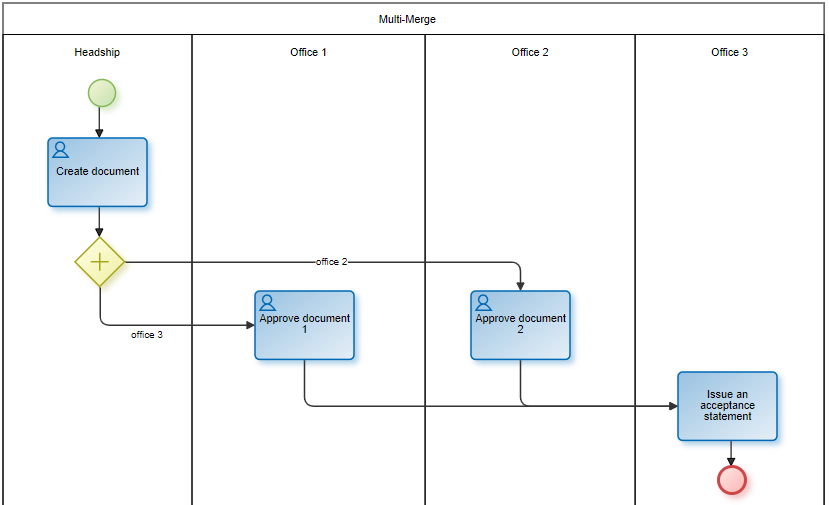Patterns
Patterns for processes design are examples that show how to connect activities to solve a common problem.
Parallel Paths
A parallel path is a point in the process execution where the execution flow is divided into two or more flows that are executed in parallel.
Example
A document is created in one office, which requires the approval of two other offices.
Implementation
To implement parallel paths, it is necessary to use a parallel gateway. This gateway creates all alternative paths without evaluating conditions.
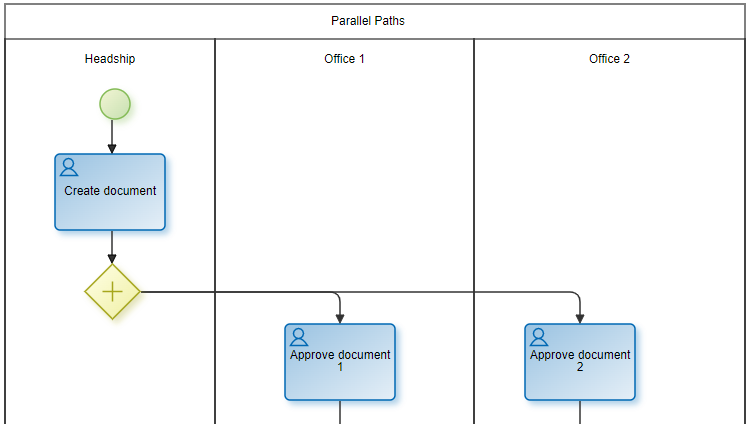
Synchronization
Synchronization is a point in the process where two or more different flows of the process are joined into a single flow. It is called synchronization because it waits for all the flows to be joined to complete before proceeding to the next activity.
Example
The document created by one office must be delivered after it has been approved by two other offices.
Implementation
In the example we use the parallel gateway as convergence which means that it synchronizes the previously activated paths.
The synchronization pattern can also be modeled with the exclusive and inclusive gateway, according to the needs of the business.
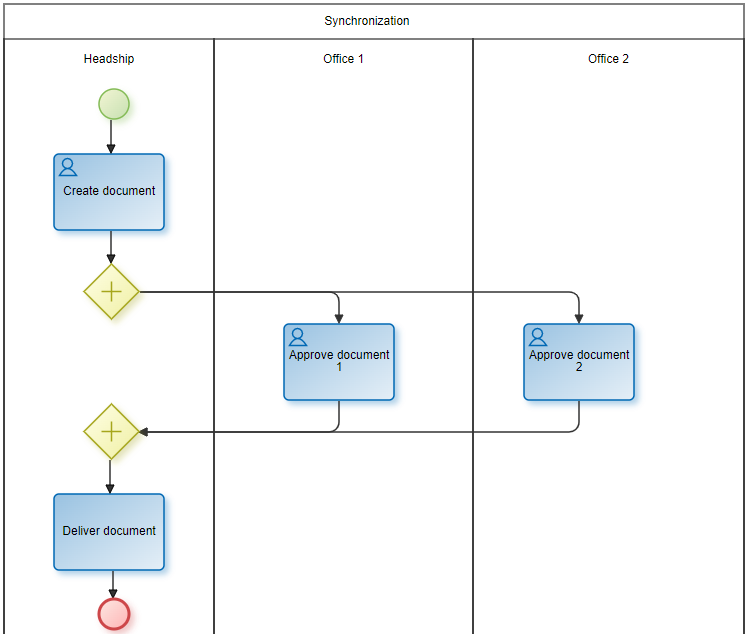
Exclusive Decision
Exclusive decision is a point in the process where a path is chosen from several paths based on a condition or information from the process.
Example
When creating a document, it must be approved by an office that corresponds to the type of document created.
Implementation
The exclusive decision pattern can be modeled with the exclusive gateway. The exclusive decision has multiple output flows, but only one of them can be made based on the conditions of each stream.
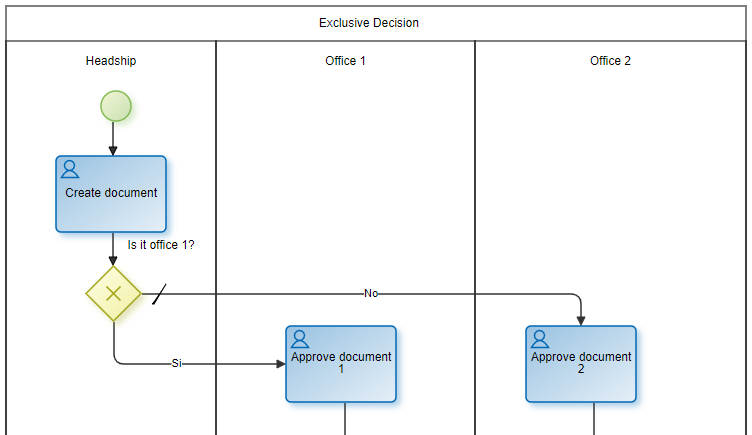
Simple Union
Simple union is a point in the process where two or more alternate paths meet without synchronization. This pattern assumes that of the different paths only one is executed.
Example
After creating a document, it must be approved by the corresponding offices according to the type of document created. Once approved by the corresponding office, it must be delivered by the office that created it.
Implementation
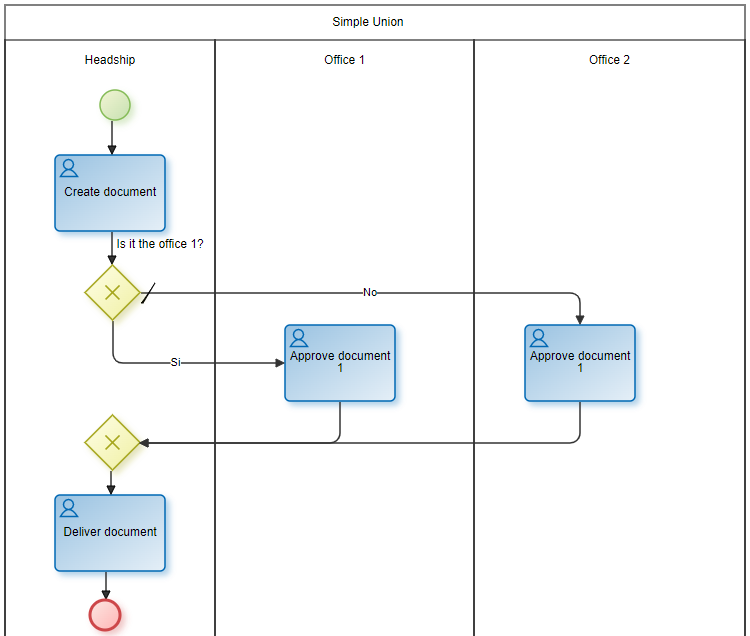
Multi-Decision
The multi-decision pattern is used to model a point in the process where a set of paths are chosen based on a condition.
Example
After creating a document, it must be approved by the corresponding office or offices according to the type of document created.
Implementation
To implement the multi-decision pattern it is necessary to use the inclusive gateway. This gateway allows one or more paths to be enabled according to the evaluation of the conditions of each flow.
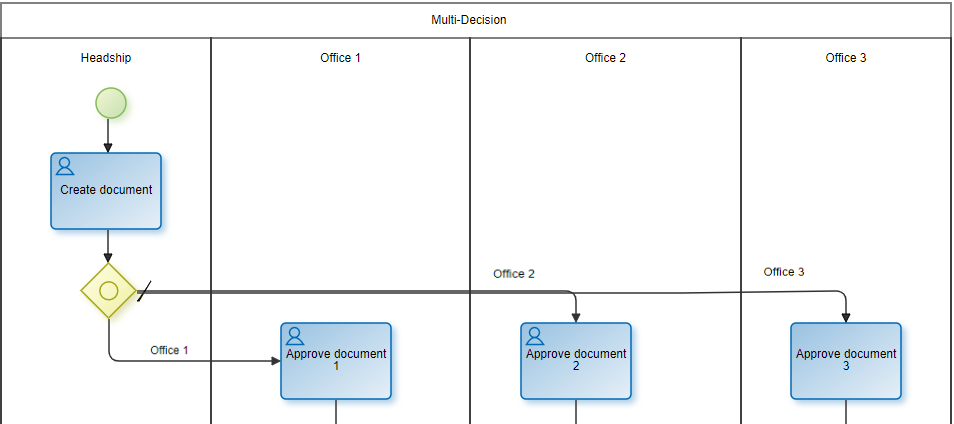
Synchronized Structured Union
It is a point in the process where multiple paths that were previously activated in the process converge in a single thread of execution.
Example
Once the document has been approved by the appropriate office or offices, it must be delivered by the office that created the document.
Implementation
To implement this pattern it is necessary to use two inclusive gateways, one for divergence (activate some paths) and the other for synchronization (synchronize the activated paths).
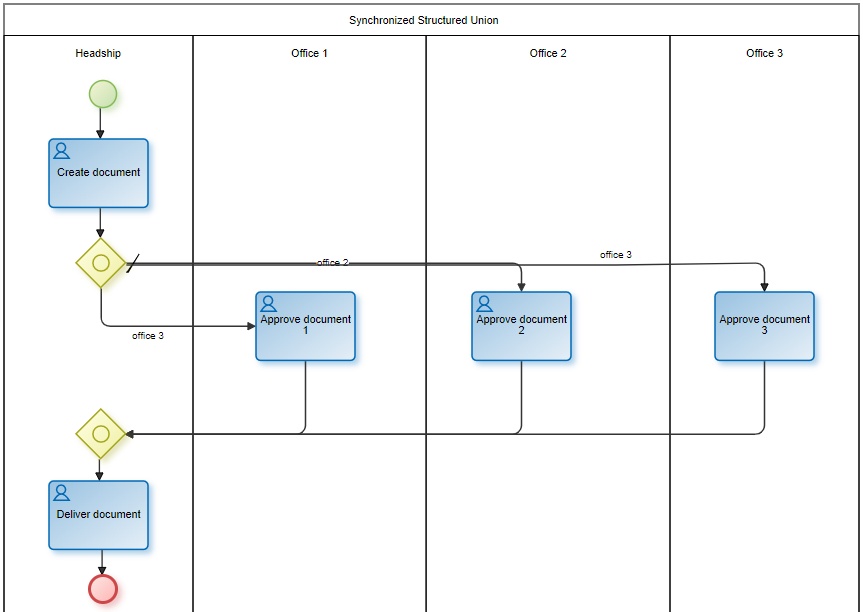
Multi-Merge
The multi-merge pattern is used to model the convergence of two or more paths in a single path. Each time an input path is activated it activates the next activity in the execution flow.
Example
After creating a document, it must be approved by two offices. Each time an office approves it, a third office must send an approval release.
Implementation
The pattern uses a parallel gateway to enable two paths. Each time the activities on one path are executed, the next activity will be as well. In this case, the "Send approval statement" activity is executed twice.
